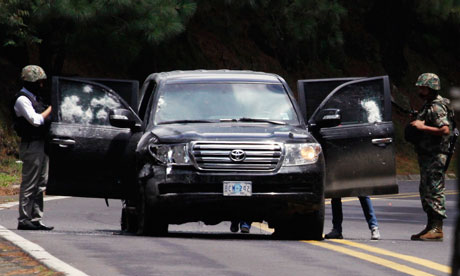By ,
 |
| Annie-Marie O'Connor - "Paul McCartney read our letter and said No!! to Chichen Itza. Thanks Paul — We love you," said a poster created by Mexico City archaeologists protesting the use of pyramids for rock concerts and New Age entertainment spectacles. |
MEXICO CITY — Mexicans are taught to revere their pre-Columbian roots. So some archaeologists are outraged by what they view as the government’s failure to safeguard the nation’s Mayan palaces and Aztec pyramids.
A recent decision by the government to erect a glass-and-steel facade on a portion of the historic Fort of Guadalupe in Puebla in time for the Sept. 15 Mexican independence celebrations was the last straw. The archaeologists have occupied Mexico’s prestigious National Museum of Anthropology, telling visitors that taking liberties with federally protected buildings was becoming commonplace.
The late-summer tourists who flock to the Chapultepec Park institution are greeted by banners, petitions and angry anthropologists with megaphones. A barefoot Mayan-speaking researcher in a white tunic blows into a conch shell to announce speeches in the lobby.
The occupying scientists have also declared: Admission is free.
Archaeologists are tweeting about “aggressions against patrimony” and using Facebook to decry tacky tourist development and New Age spectacles that they say will ruin the ruins.
Just when government officials were hoping to make money on the hype over Dec. 21 marking the end of the world, as predicted by the Mayan calendar, archaeologists are threatening to shut down the party even before it has begun.
“Our national monuments are being violated,” said Felipe Echenique March, head of the union that represents the National Institute of Anthropology and History (INAH), the government agency charged with protecting historic sites. “Public archaeological sites are deteriorating. We are resisting this destruction.”




